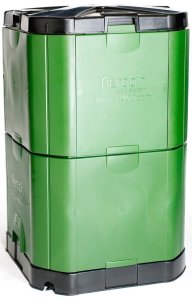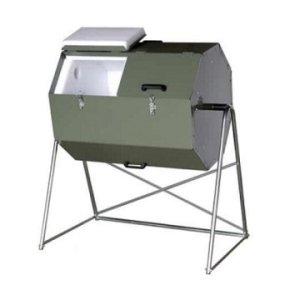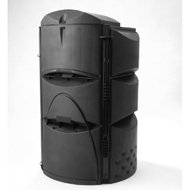Life on the Greenway
Dewey Demonstration Gardens: Urban Composting Area
As we mentioned in previous posts, the conservancy is developing a demonstration garden project at Dewey Square, with four components:
- Pollinator Garden
- Raised Edible Garden & Outdoor Classroom
- Rain Garden
- Urban Composting Area
Today’s topic is the urban composting area. To understand why we’re installing composting bins in the Dewey Demonstration Garden, we spoke with Jessica, one of our Green & Grow leaders.
Jessica, why composting? What does it do?
Composting is like recycling, only with organic ‘waste’. We will take the organic debris we gather in Dewey Square and other Greenway locations and put the material in the compost bins in Dewey Square Park. There, the naturally occurring bacteria and fungi break the materials down into rich organic compost. The compost will be spread in the planting beds at in Dewey Square, adding rich organic fertilizer to the soil. Composting is a simple practice which dramatically reduces the need for landfill space (over 50%, according to the Environmental Protection Agency or EPA) Composting also reduces the production of methane gas from landfills when waste decomposes anaerobically (or, without air). Composting uses air as tool to break down organic matter much quicker and with less odor.
What are the composting bins that you’ll be using?
The three bins you will find in the urban composting area are:
- the Joraform 270 (the silver/green tumbler),
- the Aerobin 400 (the tall green stationary bin) and
- the Earthmaker (the medium-sized black bin).
The Joraform 270 is a great solution for medium sized families with a small yard. The Aerobin 400 was donated by Exaco and it’s a great solution for a large family with a backyard. The Earthmaker was also donated by Exaco and it’s a great bin for a small family with a small yard.
What are the ingredients for good compost?
Good compost is made from whatever organic materials you have to compost! Oxygen is the most important ingredient in compost—all those helpful organisms need air to breathe, which speeds the process and limits any odors. The compost materials should be made up of a 60/40 mix of brown and green organic matter. Brown matter, like leaves, paper and small branches give the compost volume and structure. Green matter, like lawn clippings, weeds, and food scraps, give the compost nutrient value. What is more important to know, however, is what NOT to put in compost. Things that should never go into compost are meat, eggs, cheese, beans, fish, and anything oily or fatty.
How long does it take for finished compost?
That all depends on the temperature and the abundance of active biology inside the compost heap or bin. It can take anywhere from 30 days to a couple of years to produce viable compost. The more organisms munching away, the faster the compost can be created. We hope to compare how fast each system works and we’ll keep you posted on our findings.
How much do you use for planting bed? Can you put it on your lawn?
We’ll use whatever compost we make right in Dewey Square, or if there is extra we’ll use in other parks along the Greenway. Compost makes a really great top dressing for garden beds and lawns. We treat our beds with compost at least three times a year; before we plant, during the growing season and then again in the fall, after the show is over. Compost is great because you know it’s safe for the people in the gardens and our neighbor, Boston Harbor, which can be negatively impacted by inorganic fertilizers.



